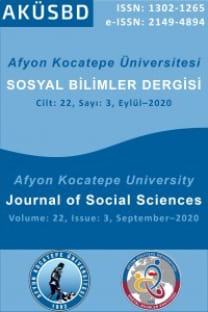Yazınsal ürünlerde biçim-içerik tartışmaları: Hakikat ve paradoks arasında sanat
Yazınsal ürünlerin oluşum ve çözümlemesinde, biçim ve içerik tartışması hep yapıldı. Sanat ürünlerinde yazınsallığı sağlayan biçim midir, içerik midir? sorusu hep soruldu. Biçimsel incelemeyi, somut olanı incelemeyi öne çıkaranlar olduğu gibi, bu iki öğenin birbirinden ayrılamayacağını söyleyenler de oldu. Bu tartışma önemliydi. Çünkü çokanlamlı bir yapıya sahip olan yazınsal metin üzerinde yerli yersiz yorumlara neden oluyordu. Çözümlemeciler arasında metin dışına çıkmamanın çabasını gösterenler olduğu gibi, metinde doldurulması gereken anlam çukurlarını doldurmaya, somut olarak dile getirilmeyen ama metinde gizli olarak var olan anlamı yakalamaya çalışanlar da oldu. Her iki tutumda da bir anlama/anlamlandırma, anlamı bir kesinliğe kavuşturma isteği vardı. Başka bir deyişle bu tutum ve anlayıştan yola çıkan yazınsal çözümlemelerde, edebiyat kuramlarında olgucu anlayışın etkisi büyüktü. Dilbilim, göstergebilim, genelde yapısalcılık da uzun yıllar olguculuğun gölgesinde nesneyi öne çıkararak bilimselliği yakalamaya çalıştılar. Yapısalcılık sonrasında bu tutum sıkı bir şekilde eleştirildi. Yeniden bir özneye dönüş, deyiş yerindeyse hem nesneyi hem özneyi, hem nesnel hem öznel olanı da incelemeyi amaçlayan çalışmalar yapıldı. Bu tartışmalardan bazıları Batı’dan önce Doğu’da yapıldı. Biz bu yazıda Doğu’da ve Batı’da yapılan biçim ve içerik tartışmalarını incelemeye; dilbilim, göstergebilim ve yapısalcı anlayışın tıkandığı noktalara, sanat ürününün niteliğine, sanatçının kimliğine ve sanat/irfan ilişkisine dikkat çekmeye çalışacağız.
Form and content discussions on literary works: Art between the reality and the paradox
The discussion on form and content has always taken place in the process of the production and analytical studies of literary works. It has always been the question frequently asked as to whether it is a form or content that gives literariness to works of art. Somehave claimed that studies on form which is concrete should be given priority while the others have pointed out that the elements, that is to say, both form and content are inseparable parts from each other. This argument was important in that every now and then there have always been different comments on/about literary texts that comprise polysemantic structures. From among those who have done analytical studies there have even been the ones trying to stick to the text itself while others try to find the meaning filling the gaps in the text which is not concretely stated but which surely exist and could be understood trough insinuations. However in both approaches there can be seen a willpower to comprehend/signify the boundaries of the meaning. In other words, starting from these two approaches positivistic understanding has had a great effect on literary theories. Linguistics, semiotics and most often structuralism have tried to catch up with the scientific mode under the auspices of positivism giving the objecta prime place. This manner has received a strict criticism in a post-structuralist period. There happened to be return to the subject and we could just as well say that there have been studies to focus on both object and subject; the objective and the subjective ones. Some of the above discussions took place in the east long before it appeared in the west. In this Article we tried to focus on the discussions on/about form and con tent and tried to point out some important facts where linguistics, semiotics and the structuralist understanding had failed. We also tried to attract the attentions to the points such as the quality of the work of art, the identity of the artist and the relation between art and wisdom.
___
- ABDUL-KÂHİR EL-CURCÂNÎ. (2008), Sözdizimi ve Anlambilim (Delâilü’l-İ’câz), (Çev. O.Güman), İstanbul: Litera Yayınları.
- ADORNO, Theodor W. (2004), Edebiyat Yazıları, İstanbul: Metis Yayınları.
- ATAÇ, Nurullah. (1958), Okuruma Mektuplar, İstanbul: Varlık Yayınları.
- BAUDELAIRE, Charles. (2007), Modern Hayatın Ressamı, İstanbul: İletişim Yayınları.
- BAUDELAIRE, Charles. (1992), Paris Sıkıntısı, (Çev. T. Yücel), İstanbul: Adam Yayınları.
- CİVELEK, Yakup. (2004), Arap Dilbilimine Giriş, Van, PDF nüshası.
- COURTÈS, Joseph. (1976), Introduction à la Sémiotique Narrative et Discursive, Paris: Hachette.
- FÂRÂBÎ. (2008), Harfler Kitabı, (Çev.Ö.Türker), İstanbul: Litera Yayınları.
- FONTANILLE, Jacques. (1999), Sémiotique et Littérature (Essais de Méthode), PUF, Paris.
- GALLISON, Robert ve D. Coste. (1976), Dictionnaire de Didactique des Langues, Paris: Hachette.
- GREIMAS, Algirdas J. ve J.Courtès. (1979), Sémiotique Dictionnaire Raisonné de la Théorie du Langage, Paris: Hachette.
- HORKHEIMER, Max. (2005), Akıl Tutulması, İstanbul: Metis Yayınları.
- İBN-İ HALDUN. (1986), Mukaddime III, (Çev. Z. K. Ugan), MEB Yayınları, Cilt: 3, İstanbul: Millî Eğitim Basımevi.
- İBN-İ HİŞAM EL-ENSARİ. (1998), Katrun-Nidâ ve Bell-üs-Sadâ, Dar’ul Ma’rife, 3.b., Beyrut.
- KARAY, R.Halit. (2009), Bir Ömür Boyunca, İstanbul: İnkılap Kitabevi.
- MAGGEE, Bryan. (1979), Yeni Düşün Adamları, (Haz. M. Tunçay), İstanbul: MEB Yayınları.
- MORAN, Berna. (2008), Edebiyat Üzerine, İstanbul: İletişim Yayınları.
- OKTAY, Ahmet. (1993), Cumhuriyet Dönemi Edebiyatı (1923-1950), Ankara: Kültür Bakanlığı Yayınları.
- ÖZNURHAN, Halim. (2006), “Ebu Hilal El-Askerî’ye Göre Lafız ve Anlam”, Sakarya Üniv. İlahiyat Fak. Dergisi, S.14.
- ÖZTOKAT, Nedret. (2003), “Göstergebilimde Yönelimler: Öznenin Dönüşü”, Dipnot, S:1, Yaz.
- SAİD-İ NURSİ B. (2009), Muhakemat, İstanbul: Envar Yayınları.
- SAUSSURE, Ferdinand De. (1978), Cours de Linguistique Générale, Payot, Paris.
- ŞABAN, Zekiyyuddin. (2009), İslam Hukuk İlminin Esasları, (Çev. İ. K. Dönmez), Ankara: TDV Yayınları.
- ŞERİATİ, Ali. (2008), Sanat, Ankara: Fecr Yayınları.
- TODOROV, Tzvetan. (2001), Poetikaya Giriş, İstanbul: Metis Yayınları.
- TODOROV, Tzvetan. (1995), Yazın Kuramı, İstanbul: YKY.
- UÇAN, Hilmi. (2008), Dilbilim, Göstergebilim, Edebiyat Eğitimi, Ankara: Hece Yayınları.
- VARDAR, Berke. (1988), Dilbilim Terimleri Sözlüğü, İstanbul: ABC Yayınları.
- WILDE, Oscar. (2008), Sanatçı: Eleştirmen, Yalancı, Katil, İstanbul: İletişim Yayınları.
- ISSN: 1302-1265
- Yayın Aralığı: Yılda 4 Sayı
- Başlangıç: 1999
- Yayıncı: Afyon Kocatepe Üniversitesi Sosyal Bilimler Enstitüsü
Sayıdaki Diğer Makaleler
Gazzali’de metafizik bilginin imkânı açısından rüya
Cemil meriç’in osmanlı ve Cumhuriyet üzerine düşünceleri
Henrı bergson’un zaman kavramına yaklaşımının çağdaş anlatı sinemasına etkisi
Özgün UYANIK, Gözde İNAL, Mustafa ERGÜN, Suphi ÖZSÜER
Örgüt kültürünün değişiminde insan kaynakları yönetiminin rolüne ilişkin bir araştırma
Anne ve öğretmen görüşlerine göre çocukların sosyal uyum ve becerilerinin incelenmesi
Yazınsal ürünlerde biçim-içerik tartışmaları: Hakikat ve paradoks arasında sanat
